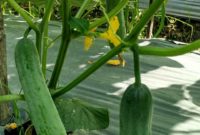The design, the equipment and the technique of replenishing the soil-water deficit by applying irrigation water is referred to as “irrigation system”. The system adopted for irrigation must ensure a uniform distribution of water in the root-zone of a crop and high efficiency of water application i.e. the ratio of water stored in the root-zone to that delivered to the field, should be the maximum. There should be the minimum or no wastage of waste either through surface run-off or through deep percolation below the root-zone of a crop. The method used should be inexpensive and economically justifiable.
Several systems of irrigation are in vogue to suit different types of crops, topography, soil types, water resources, climatic conditions and costs. These systems are: surface-irrigation system, sprinkler irrigation system, subsoil-irrigation system, and drip-irrigation system.

Surface-irrigation system. In the surface-irrigation system, water is directly applied to the surface of the soil and is spread by gravity flow incidental to the slope of the land. There are several methods in this system, the commonest being flooding from a ditch, check basin, ring and basin, border strip and furrow. For irrigation with the surface system, fields are laid out every time before the crops are sown, since these layouts are destroyed during preparatory tillage. In order to achieve a higher water-application efficiency in the surface system of irrigation, the fields must be leveled as well.
The check-basin method of irrigation is widely practiced in India, as it is well suited to all irrigable soils and to a variety of crop. Checks, rectangular or square, with sizes, varying from about10 to 100 square meters or even more, are used. The basins are leveled in both directions. Slopes up to two to three per cent can be irrigated by using this method with a good control on irrigation water and high water-application efficiency. On steeper slopes, this method can be used after proper terracing. The limitations of this method are that it has too many ridges which not only occupy the land but also hinder interculture and harvesting with mechanical means.
The ring and basin method is commonly used for widely spaced orchard crop to irrigate individual trees or groups of trees. The important consideration in the case of the ring and basin method is to wet the soil only around the tree and not the entire land, thus economizing on the water.
In the case of the border-strip irrigation method, the field is divided into long narrow strips, with small paralleled ridges on the sides. The strips are 3 to 10 meters wide, and across the width the strip is leveled perfectly. The length of a strip ranges from 50 to 300 meters or more, depending upon the slope, the rate of water-intake of the soil and the stream size. This method is also suited well to all irrigable soils and to closely spaced rowed crop and even to pasture crop. Slopes up to seven per cent can be irrigated when the pasture crop are grown. On steep slopes, this method can be used by proper terracing or trenching along the contours. For laying out border strips, the land needs to be graded uniformly to achieve a high water-application efficiency. Larger flows are required for irrigating border strips than those in the case of other layouts.
